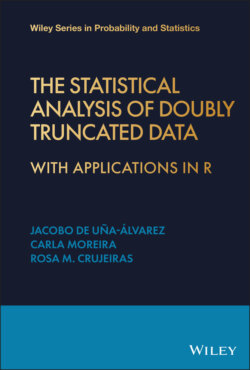Читать книгу The Statistical Analysis of Doubly Truncated Data - Prof Jacobo de Uña-Álvarez, Prof Carla Moreira - Страница 20
1.4.3 Equipment‐ S Rounded Failure Time Data
ОглавлениеCompanies are often interested in estimating the time to failure of their devices after installation. For doing this, maintenance departments may register events of failure between two specific dates and for the units installed in the field. This field lifetime distribution is, however, doubly truncated because of the interval sampling. The Equipment‐ S data (Ye and Tang, 2016) concern failures of a certain device (details are not given due to confidentiality issues) recorded between 1996 and 2011, a 15 year long observational window. Information on the date of installation and the date of failure, rounded to years, was obtained by digitizing Figure 2 in the referred paper. This dataset is therefore a discrete version of the original data in Ye and Tang (2016). In this example the right‐truncation time is the number of years between installation and 2011, while the left‐truncation time is just . In Table 1.3 the Equipment‐ S failure times are summarized.
The observable range for the Equipment‐ S failure times goes from zero to 34 years, which is the maximum observed value for the right‐truncating variable ; hence, estimation of the reliability can only be done conditional on failure within the first 34 years of operation.
EqSRounded in the DTDA package contains this dataset, which is used in Chapter 2.
